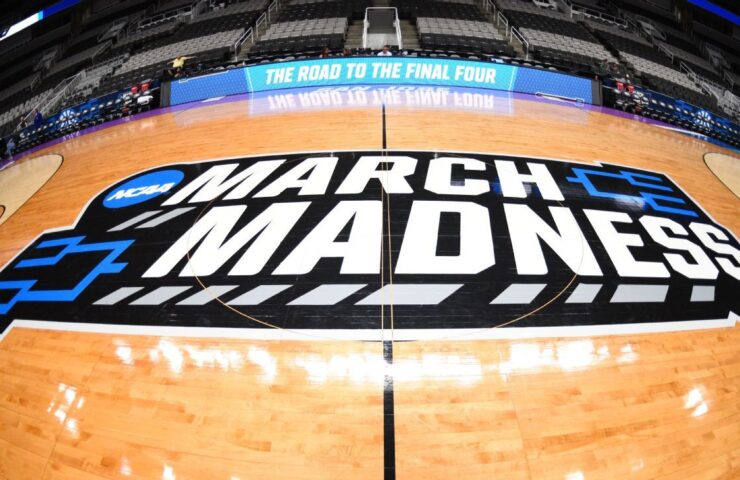
Wetzel: Please do not broaden NCAA basketball competitions
-
Dan WetzelJun 27, 2025, 08:00 AM ET Close Dan Wetzel is a senior author focused on investigative reporting, think piece and feature storytelling.The most persuading argument versus expanding the NCAA guys’s and ladies’s basketball competitions from 68 teams is quite simple.Almost nobody is
requesting for it.Editor’s Picks
1 Related There is no groundswell from fans. There are no enormous rankings for the present First Four (i.e., play-in) games that suggest consumer demand. There have been no teams legally cheated out of a quote– they had 30 regular-season games to make their case. There is no apparent competitive factor for it.Outside of a
couple of coaches and athletic directors, most of whom stand to earn healthy bonus money in having their teams reach March Madness, there isn’t anyone speaking out in favor of this.And yet, as ESPN’s Pete Thamel reported this week, possible growth to 76 schools stays on the table with a”decision … to come in the next couple of weeks. “To echo so many who treasure college basketball in general, and the tournament in particular … please do not. If anything, 68 is four a lot of, requiring
clunky play-in games on Tuesday and Wednesday in Dayton, Ohio, before the centerpiece begins Thursday.Look, innocent individuals won’t pass away if there is more basketball each March.
So, yes, there are more pressing concerns on the planet. Still, why tinker sporting excellence? Just to placate a few more middling groups and get a couple of more dollars from television?Pigs get fat, hogs get slaughtered.For decades, the NCAA has possessed something special– and nearly difficult to achieve. It owns two complete days on
the sports calendar– the very first Thursday and
Friday of the NCAA tournament.These are pseudo national holidays, total with people avoiding work and school while tuning in at the workplace or during well-timed lunches. It produces a groundswell of activity and
excitement that draws in casual fans who excitedly fill brackets with groups, including numerous they’ve never ever watched.That engagement is what makes March mad and has actually turned this uniquely American occasion into an iconic slice of Americana that has made it through even as basic interest in the sport has waned.It should be secured at all costs.The choice to expand from the perfect 64 to 65 teams in 2001 and after that 68 in 2011 were the original sins here. It began as a response to the Western Athletic Conference splitting in two, creating the Mountain West, and indicated starting the tournament
before Thursday. You could compare it to opening presents on Christmas Eve, but not nearly as enjoyable.Fortunately for the NCAA, America has mainly disregarded the doubleheader games on Tuesday and Wednesday(two of them including 16 seeds playing each other). Thursday has preserved its magic.Yet by broadening by eight more teams, Tuesday and Wednesday would now feature six games each, most likely extending throughout the day. The prospective impact on fan interest or confusion over a watered-down week is perilous.This spell can be broken. The formula can fall apart.For what purpose? There isn’t a good one.Division I college basketball has grown through the years, with 355 groups qualified for the competition last year.
At just 19.1%, that makes it challenging to get a bid.Yet, the numbers deceive. Development has come practically solely due to the fact that little, one-bid leagues have actually included members from Department II and III. While the champs of those leagues get an automatic bid, it has zero result on whether a quality group capable of a run earns among the 37
at-large bids.In 2025, the so-called Power 5 leagues(
ACC, Big East, Big Ten, Big 12 and SEC)protected 33 of those 37 at-large choices. The Mountain West (3) and West Coast(1) made the others. No good team is being squeezed here.
The Northeast Conference could broaden to 30 teams and still be a one-bid operation.As for a possibility to “play into”the competition, it’s currently available.Every conference has a tournament of its own, with the winner getting an automated bid to the Big Dance. Virtually every conference permits all of its teams to participate. That means a team such as the Castle– which went 5-25 on the season and 0-18 in the Southern Conference in 2015– had an opportunity to win four league competition games and get in (and after that even win six or 7 more and be crowned nationwide champs). If you think about the conference competitions a play-in round of its own– which it is– the NCAA tournament is currently over 300 groups strong. Almost everybody already has a second chance.To offer eight more groups a 3rd opportunity defies reasoning when the competition’s rhythm is so instilled in the American sports consciousness.This is about cash, although not so much money in regards to extra tv income as the majority of would expect. First 4 games usually average just 2 million to 3 million audiences– with no other tournament competition– and are relegated to TruTV. It’s not like fans are pleading for more. Crowding the window with numerous games isn’t likely to develop a windfall.No, this has to do with efficiency benefits for eight more coaches and 8 more athletic directors.If you are among those people, then perhaps this makes some short-term sense.
If you step back however, there is little to nothing to be gained therefore much to be lost.Sixty-eight is ample.
